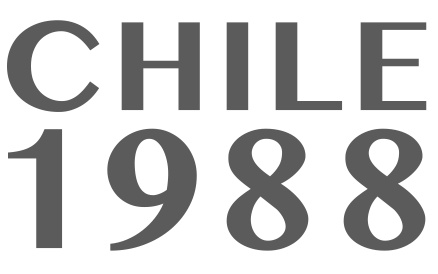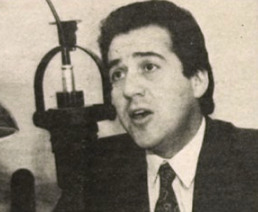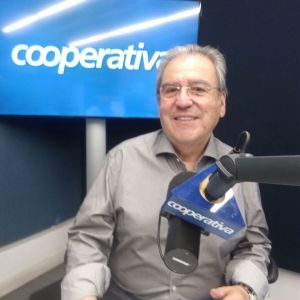October 5, 1988, is a highly anticipated date for a significant number of Chileans who had worked for 17 years to restore democracy. The entire period lived under the dictatorship in Chile meant the disappearance and execution of people, torture, exile, dismissal from work, and a critical level of poverty. Chile reached a poverty rate of 40% of the population, and unemployment exceeded 25% to 28%. So, you can understand that a situation of this nature, marked by international condemnation from the United Nations, condemned the Chilean dictatorship for 17 years for human rights violations. It was a country practically isolated from the world. The situation became increasingly critical, with a series of financial scandals, particularly in 1982 due to the banking crisis. This created a climate of indebtedness for Chileans with easily granted loans and high interest rates, I would say speculative interest rates. People couldn’t repay their loans, and this led to a widespread sense of default that bankrupted the banks, leaving them practically insolvent. In 1982, the state had to come to the aid of the banks because otherwise, the country would have faced bankruptcy. The state managed to sustain the banks with long-term loans.
Well, this entire situation was also marked by the other phenomenon concerning human rights. Therefore, October 5 was a powerful day in terms of its significance for recovering democracy. There was a campaign where the dictatorship allowed the opposition to also advertise its message. They did this with the intention of legitimizing the outcome of the plebiscite, which they believed they had secured and would win. They had undertaken a series of actions over many years that they thought would earn them votes, especially in the popular sectors. In the television campaign, there was a marked difference because the right-wing dictatorship implemented a campaign known as the “campaign of terror.” In other words, if the “No” vote won, the Unidad Popular (Popular Unity) would return, and communism would take over the country. On the other hand, the “No” campaign led by the parties from the democratic alliance focused on a very categorical message: “The joy is coming.” This implied that all the time of sadness and pain would come to an end if the “No” vote won because that would open the possibility of holding free elections. The wording of the vote was highly biased, as it asked something like: “Do you support His Excellency the President of the Republic, Augusto José Ramón Pinochet Ugarte, to continue leading the country?” The options were “Yes” or “No.” Additionally, the “No” option always carries a negative connotation subliminally speaking.
So there was anticipation, but there was also fear that the plebiscite would be manipulated to grant a victory to the dictator. Therefore, the democratic alliance, with the Concertación del Partido por la Democracia, which was already being nominated as the coalition, consisting of 17 parties, organized a system to establish control over the voting process in each polling station across the country. People volunteered in a rather precarious system because at that time there was no computer technology, no internet, and no cell phones. So each representative at the polling station took note and went to a public telephone to transmit the results that were being produced at the tables or polling stations to a central location that had been specially prepared to process that data.
The day started very early in the morning because I worked at Radio Cooperativa, providing information about the polling places and how to present oneself with the identification card because the dictatorship had conducted other sham plebiscites. One plebiscite that was held on 1978, without electoral records to support the government. Then, in 1980, another one was held without electoral records. People could vote wherever and as many times as they wanted. In the first plebiscite, they cut off the corner of the identification card, and in the second plebiscite, they affixed a stamp to it. So, there was a lot of mistrust, which is why the Concertación del Partido por la Democracia took the precaution of keeping a parallel count of the votes. The morning was very tense, but people turned out to vote massively. I believe the abstention rate was around 10% to 12%, which is very low compared to historical data. Chile had elections with abstention rates as high as 18% to 20%. Therefore, the abstention rate here was very low. People had a desire for change.
I had started at Radio Cooperativa, hosting the special program at 6 in the morning. Around 10 or 11 in the morning, I went to vote in the commune of Providencia, in the eastern sector of Santiago, and I saw a massive turnout of voters. Well, the whole process unfolded with relative normalcy, with some minor incidents. But in the afternoon, Pinochet announced that a microbus had been seen in the Plaza Italia area, which is the heart of demonstrations, with supposed uniformed police officers, but they were counterfeit police officers. Pinochet said, “We don’t know what those people want, but they could be terrorists.” So, that created another element of uncertainty. However, as the hours passed, the government did not disclose the results of the plebiscite. But the Concertación announced that the “No” option was winning. So, in the commune of Providencia, in the eastern sector of Santiago, which was assumed to be predominantly right-wing, the Pinochet regime won. But throughout the country, the “No” option prevailed. The only region where the “Yes” option won was the Araucanía region. It was the only place in Chile where Pinochet won the plebiscite.
But in general, for example, in the case of Radio Cooperativa, we were reporting on everything that happened that day. However, television, especially Channel 13, concealed the information at one point. When everyone wanted to know the news and the progress of the vote count in different polling stations, they aired a Road Runner cartoon. That also marked a moment of great fear that there was control, and even Televisión Nacional, which was directly controlled by the state, started broadcasting cartoons. So, there was a great concern generated by that.
There were two moments, one when Sergio Onofre Jarpa, who had been Pinochet’s Interior Minister, said “NO” won on television, and General Matthei, who was a member of the government junta, went to La Moneda (the presidential palace) and when asked by journalists, “What brings you here, General?”, he said, “Well, I’m here to defuse the bomb,” the fuse being like the detonator of such an artifact, he said, “because ‘NO’ won.” So, he acknowledged that “NO” had won the election before entering a meeting convened by Pinochet and Minister Sergio Fernández Fernández, whose purpose was precisely to manipulate the result because the government only announced a minimal percentage around 2 in the morning to recognize the outcome. But before that, they had provided information stating that “YES” was winning, but it was only about 5% of the vote.
So, it was a moment of great uncertainty, and the parties of the Concertación asked people to remain calm and to do all that. But still, people took to the streets to celebrate. That was more or less the general idea of October 5th, which later exploded the next day, and people definitively took to the streets, and curiously, they hugged the carabineros (police officers) and celebrated with them. The carabineros who were in public view. That represented a practically new dawn for Chile.


